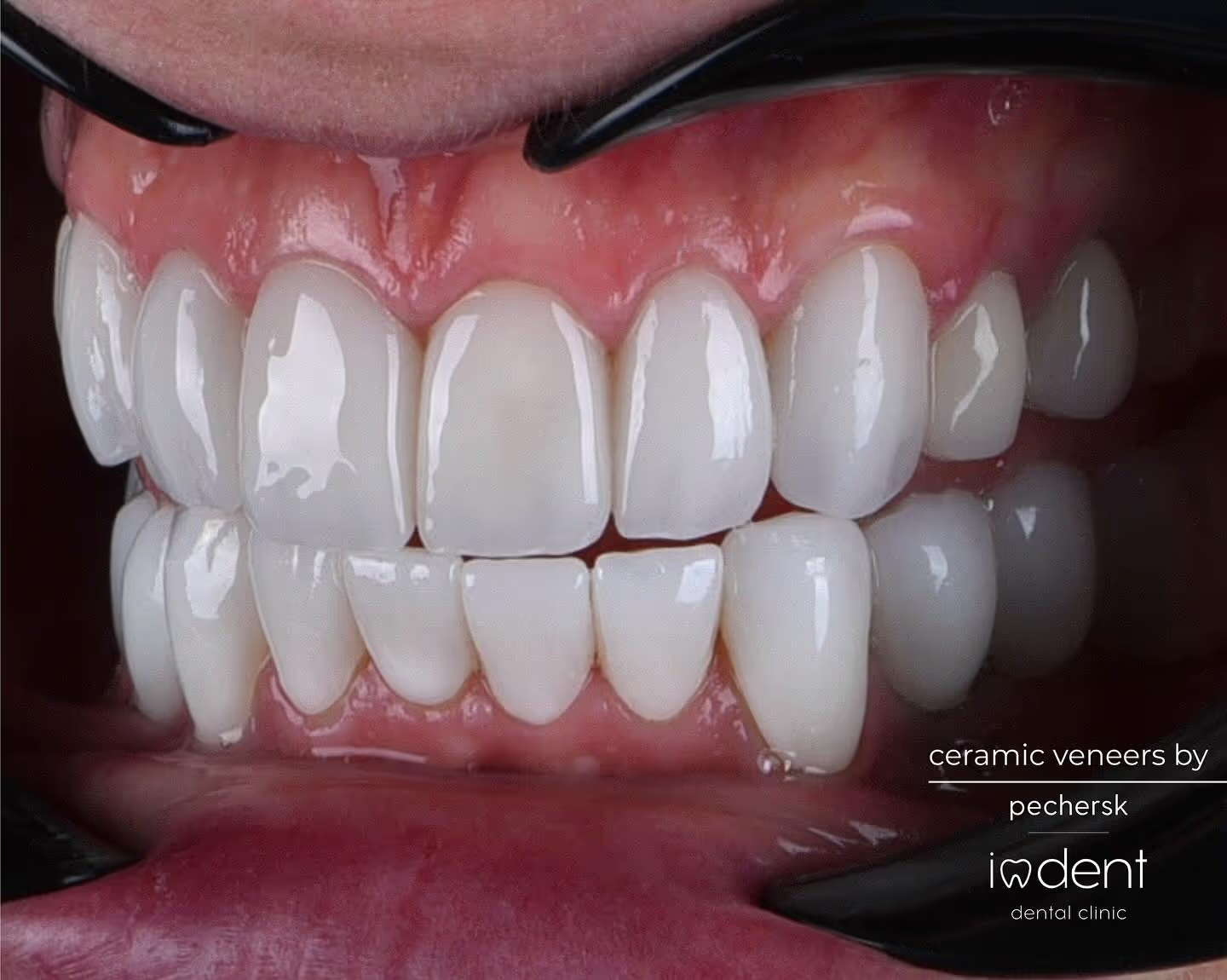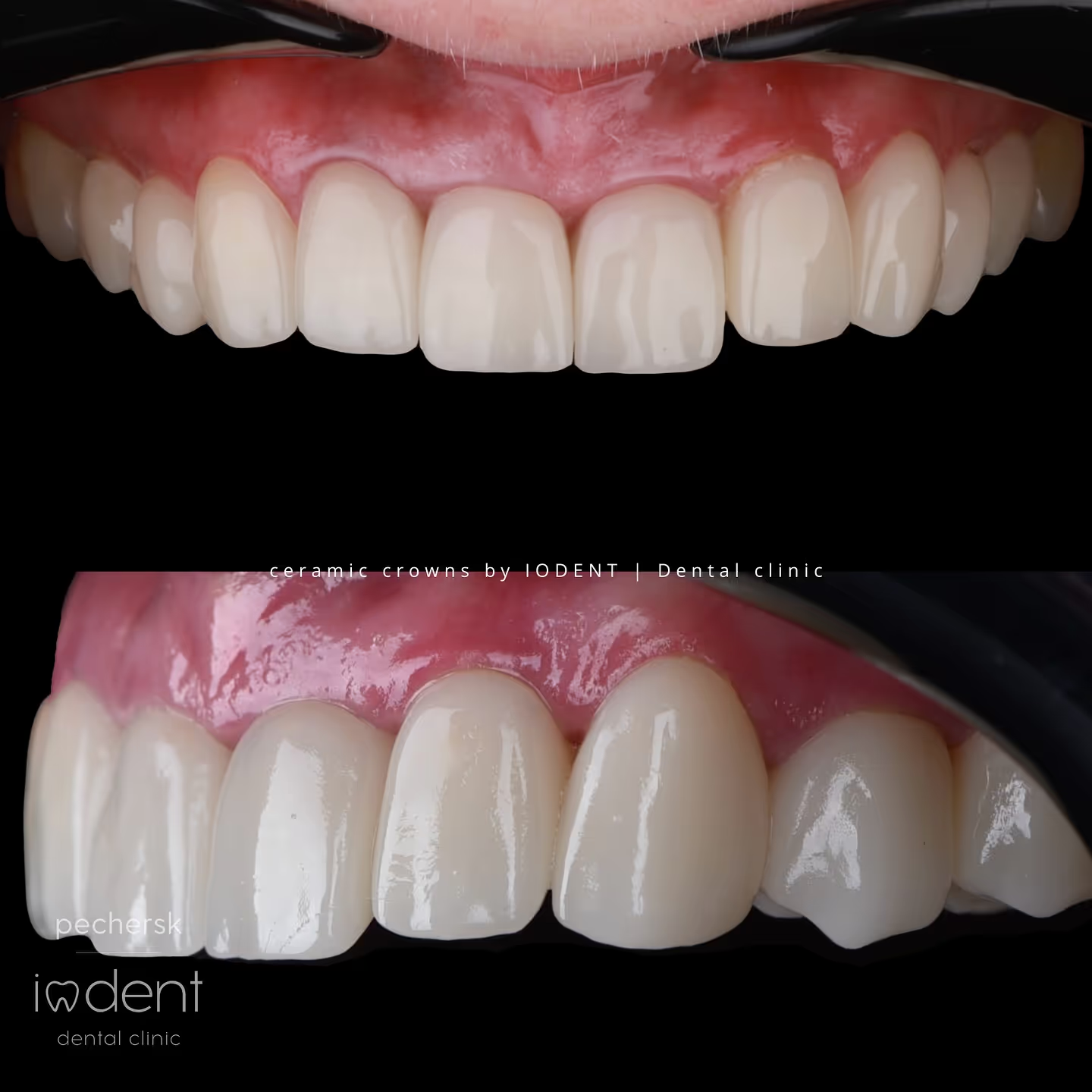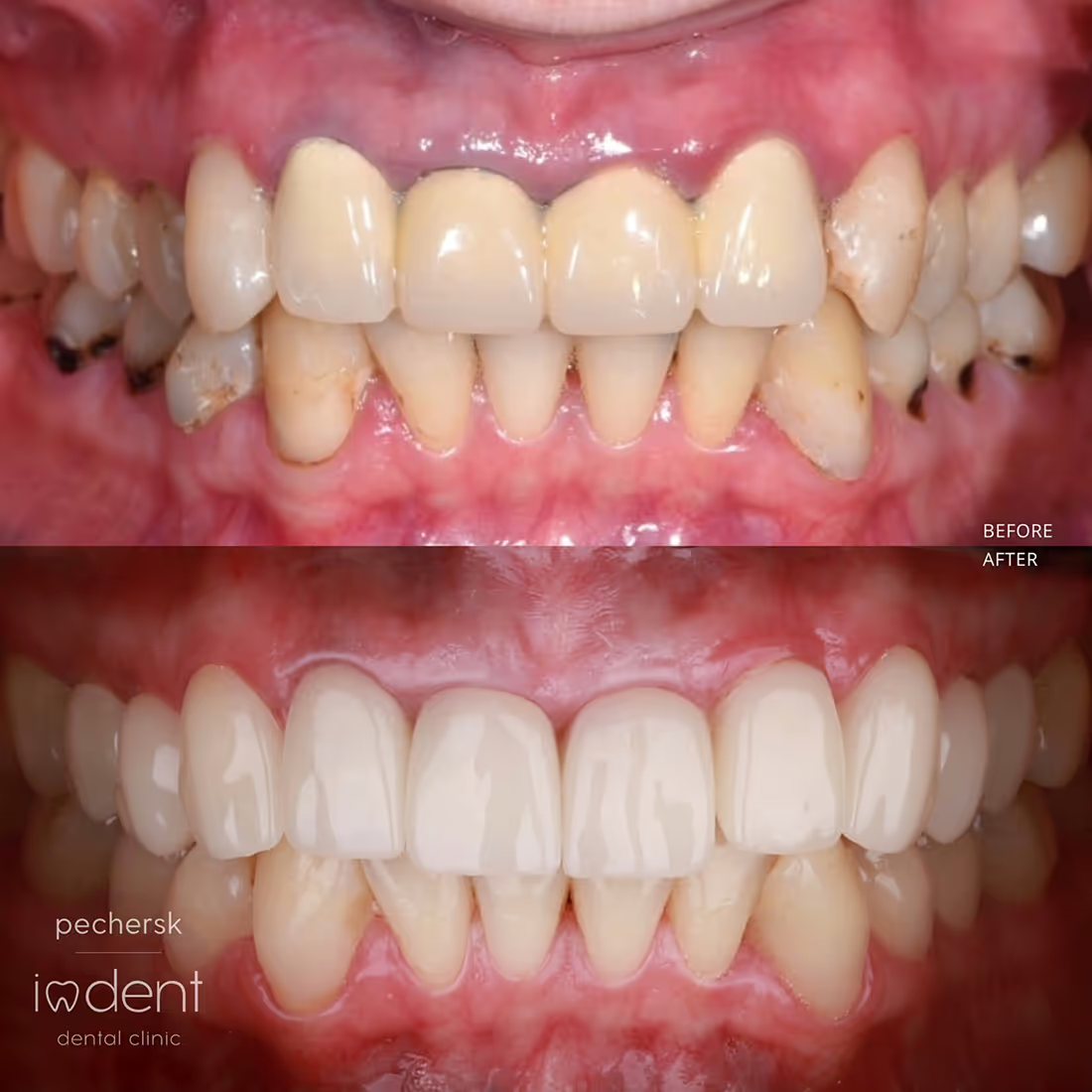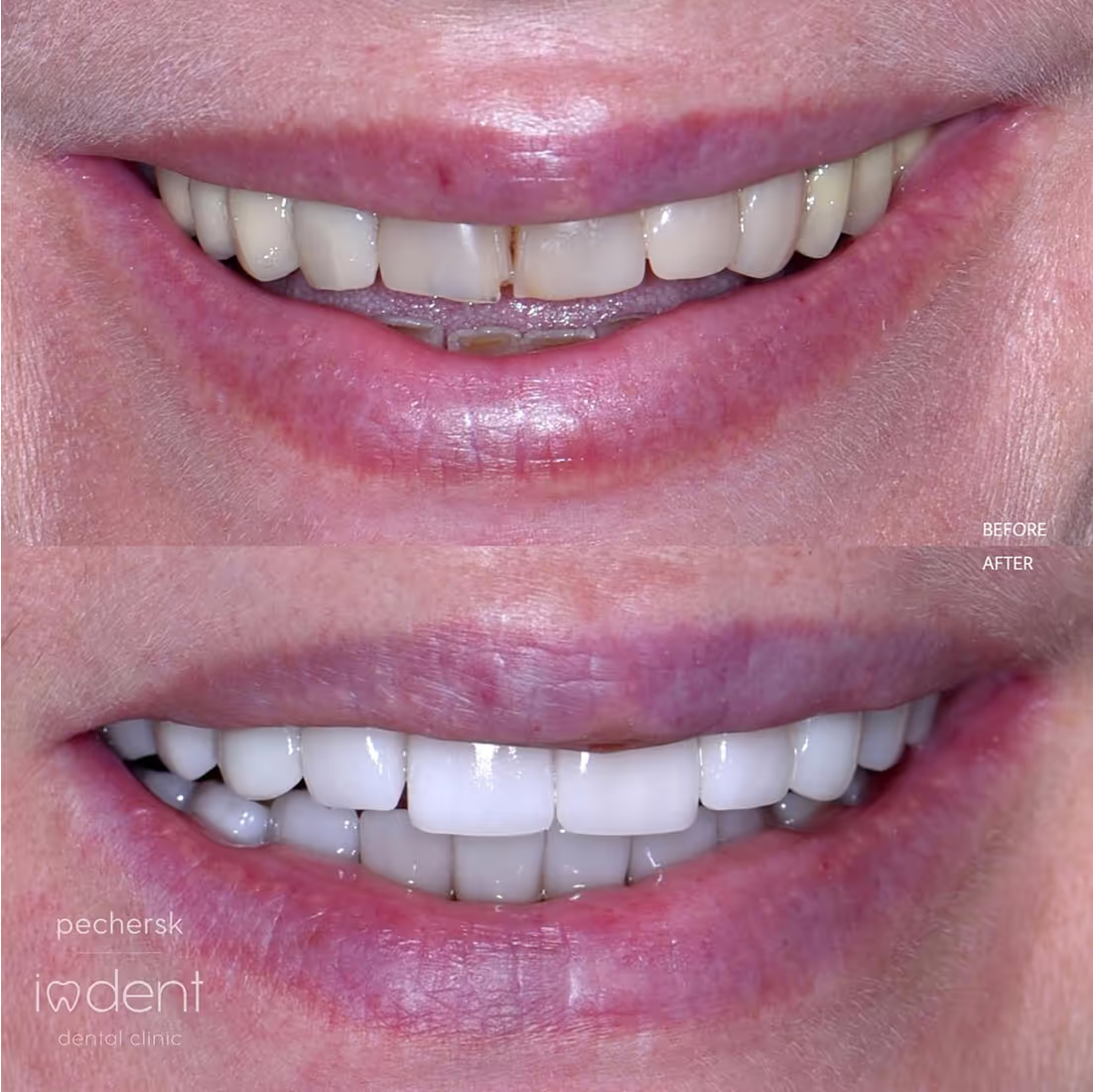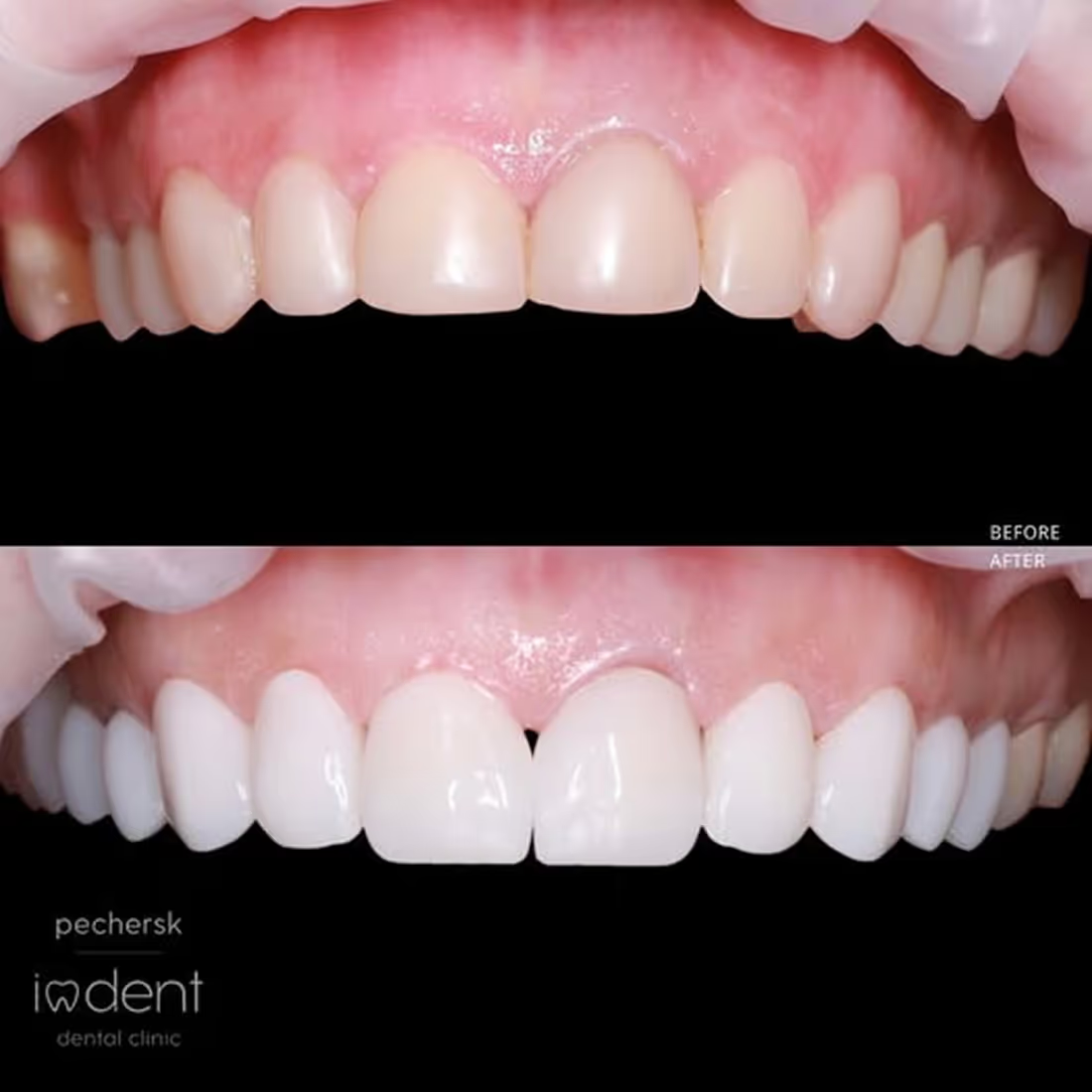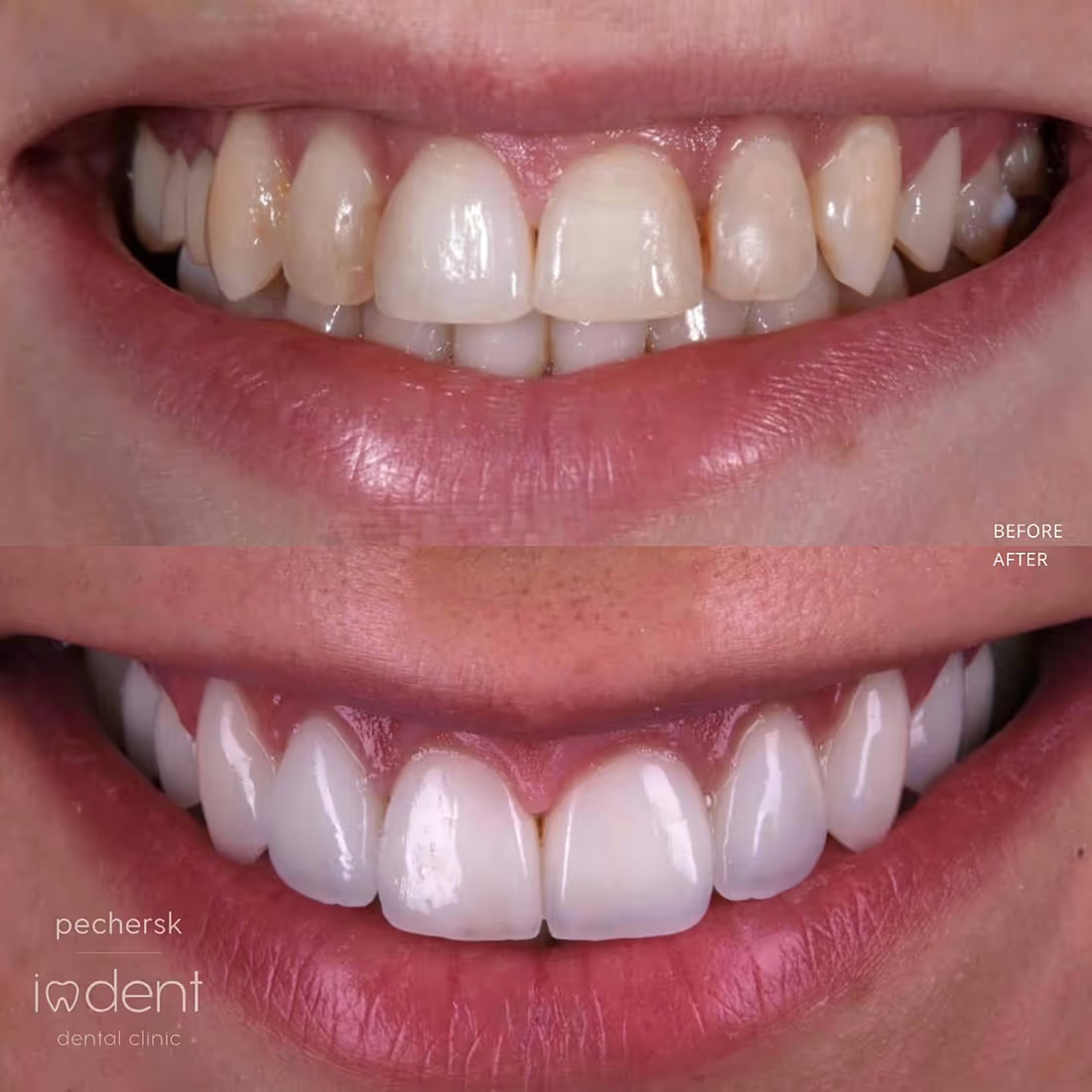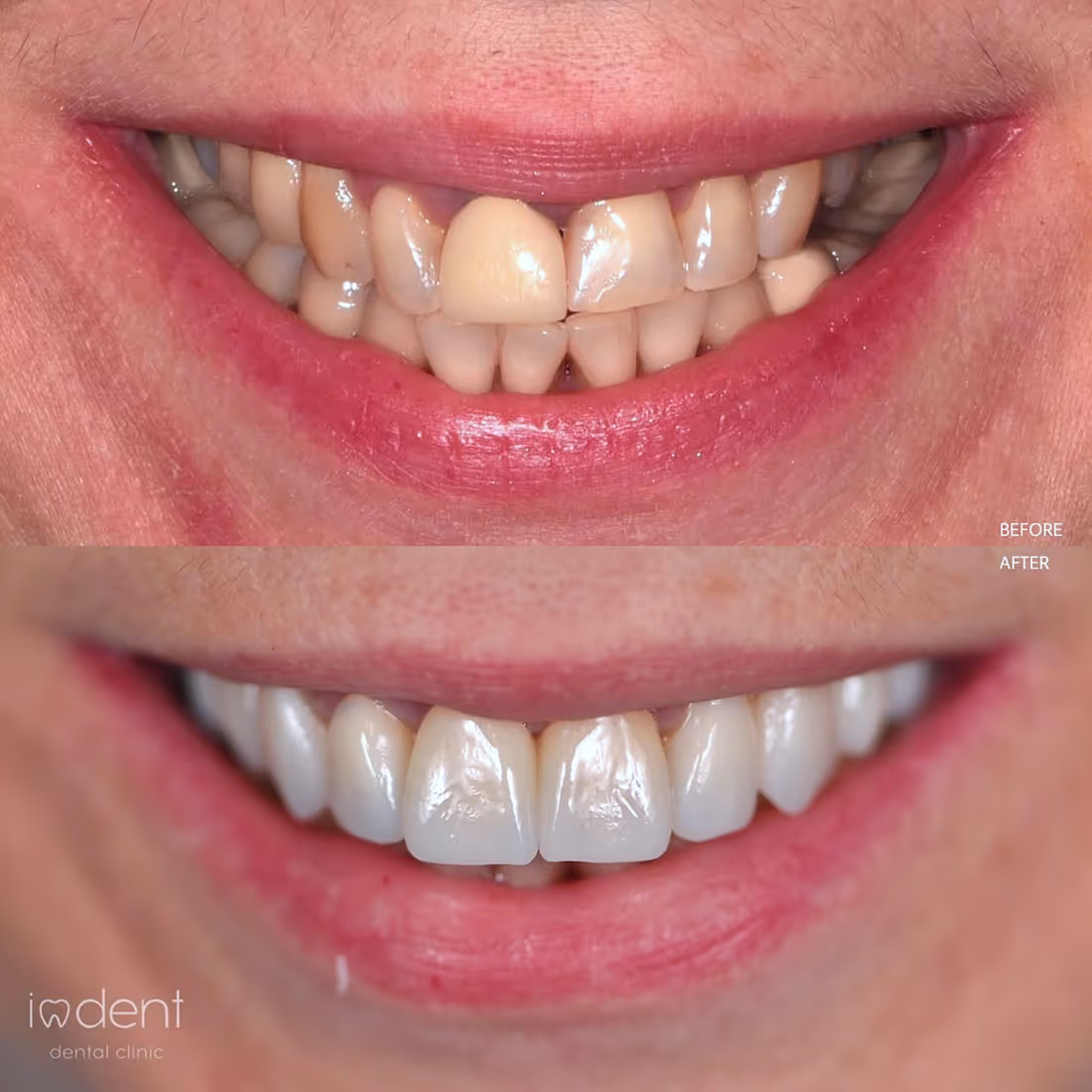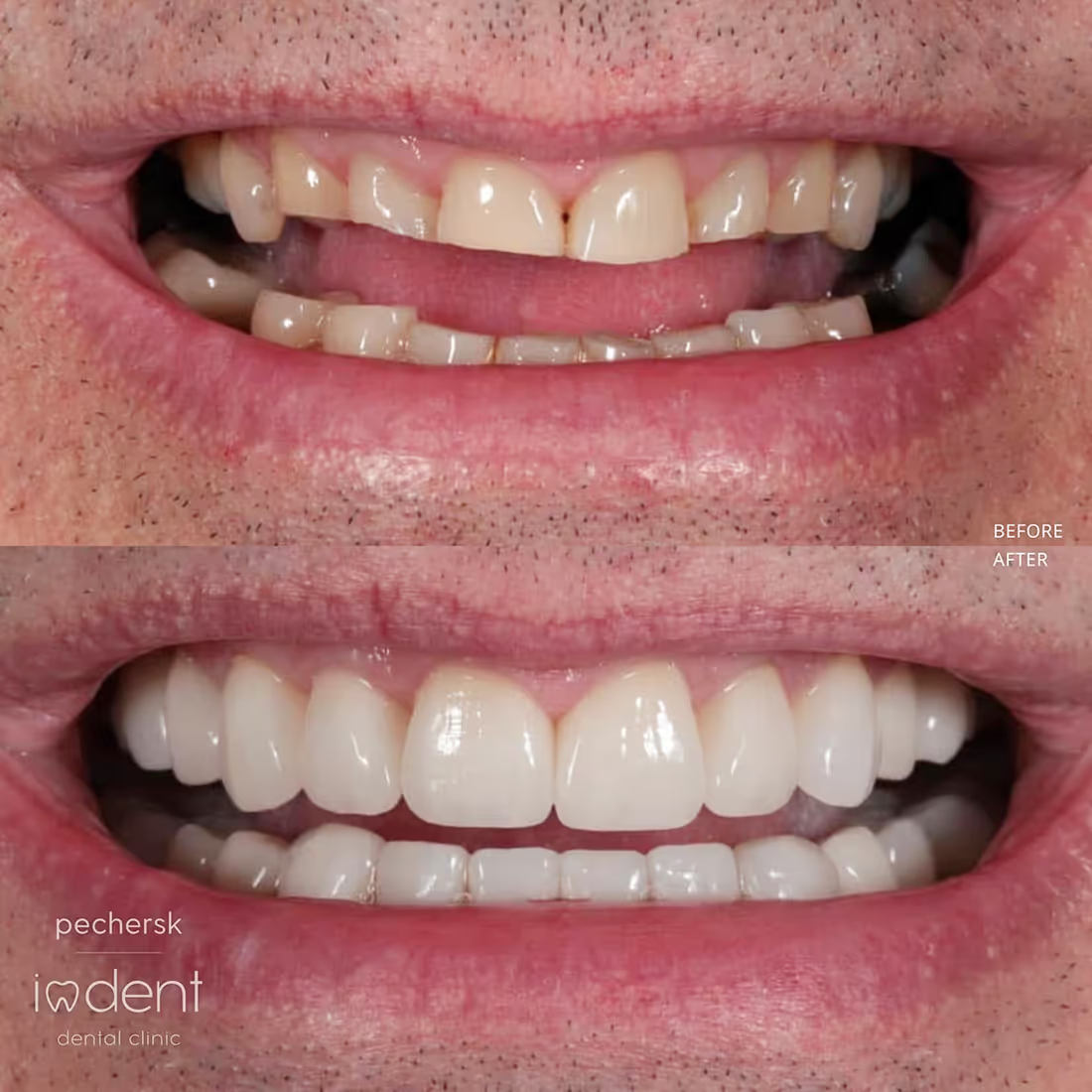Prosthetics with metal-free structures
Metal-free dental structures are very popular for restoring teeth, especially front teeth. The main directions of prosthetics with the help of metal-free structures are all-ceramic restoration and ceramics on zirconium oxide.
The advantages of metal-free structures are their strength, durability, biological compatibility with oral tissues, absence of allergy risk, aesthetics, low thermal conductivity, and the possibility of prosthetics after dental implantation.
Types of metal-free structures:
- Zirconium crowns
- Ceramic veneers
- Inlays
- Onlays
- Bridge-like prosthetics
Implant-based prosthetics
Implant-based prosthetics is a more effective option for restoring both single-tooth loss and complete adentia. This method provides high aesthetics, does not harm healthy neighboring teeth, and has a long service life.
Prosthetics on 4 and 6 implants
Prosthetics on 4 and 6 implants is an effective solution for people with a complete absence of teeth on the upper or lower jaw, or both simultaneously. With the help of advanced techniques All-on-6 and All-on-4, implantation of edentulous jaws can be performed even in conditions of bone deficiency and allows restoring 10-12 teeth on one jaw in one visit.
Prosthetics using articulators (analog and digital)
The articulator allows to accurately reproduce the movement of the temporomandibular joints and diagnose dysfunction of the chewing apparatus. Based on this device, an individual orthopedic structure can be created for each patient.
Removable dentures
Removable dentures are used for partial or complete tooth loss. Patients can remove these dentures on their own without the need to see a dentist.
Currently, the most common types of removable dentures are plate and clasp-retained dentures, which attach to teeth or crowns. Both options are not as aesthetic or comfortable and cannot fully replace missing teeth. However, they have one important advantage over implantation - affordability.
Conditionally removable dentures on implants
Conditionally removable dentures on implants are attached to abutments, which are fixed to implants using threaded connections or dental cement and can only be removed by a dentist. This method is used for partial or complete edentulism. The advantages of this method include a natural feel during use, aesthetic appearance, and lower cost, as fewer implants are needed.


